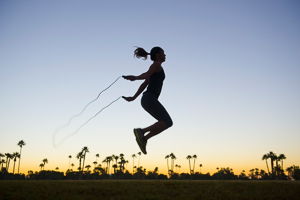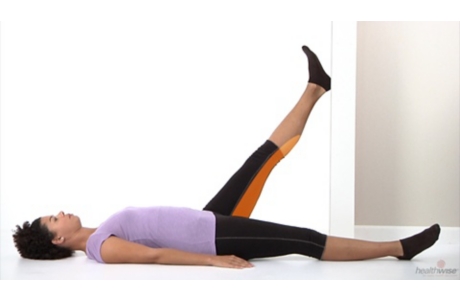Exercise and Physical Activity Ideas
Topic Overview

Aerobic activity raises your heart rate and keeps it up for a while. This increases the amount of oxygen delivered to your heart and muscles. Over time, this kind of activity benefits your heart, your muscles, your mood and self-esteem, and your amount of energy. It can lower your blood pressure, cholesterol, blood sugar, body fat, anxiety and depression, and fatigue.
Finding the right activity
Experts say to do regular moderate activity and/or vigorous-intensity activity.
Here are some ideas for both types of activities. You can boost many of the moderate activities in the left column to a vigorous level by doing them faster or harder.footnote 1
|
Moderate intensity |
Vigorous intensity |
|
General exercise:
|
General exercise:
|
|
Water exercises:
|
Water exercises:
|
|
Outdoor activities:
|
Outdoor activities:
|
|
House and yard work:
|
House and yard work:
|
Adding variety to a fitness program is a good way to keep motivated.
- Vary the activity. If you are getting bored with walking, try swimming or an aerobics class.
- Vary the place. Try a new route for walking or biking or even a different room for your exercises or stretching. By having several options, you can pick one that suits your mood or schedule.
- Vary the time. Do your exercises at different times and for different amounts of time. If you become bored with your noon walk, try exercising in the early morning or after work or school. Instead of doing one 45-minute session, do three 15-minute sessions.
Activity at the office
If your job includes lots of sitting, try adding these short bursts of activity to your day:
- Use your commute to do some extra walking. Park several blocks away, or get off the bus a few stops early.
- Use the stairs instead of the elevator, at least for a few floors.
- Suggest holding meetings with colleagues during a walk inside or outside the building.
- Go the extra distance when possible: Get your coffee on another floor (use the stairs) or use the restroom that’s the farthest from your office.
- If you need to speak to a coworker, walk to that person’s office or station rather than using e-mail or the phone.
- Use your morning and afternoon breaks to take quick 15-minute walks.
Coaching and teaching
If you are bored with a sport or activity that you once enjoyed, coaching or giving instruction can renew your interest.
- Youth leagues for organized sports are often seeking good coaches.
- Take classes to become a certified fitness leader.
- If you cycle, offer to lead a group of schoolchildren on a bike ride to teach bicycle safety.
- Offer to lead a walking group.
Competition
Competition can be a good motivator because:
- It gives you a specific and measurable goal to work toward, such as walking or running a 5 km or 10 km race.
- Learning the details of a new course or event and then preparing for it can restore the excitement and challenge that’s gone from more familiar competitions.
Helping to plan or organize a competitive event instead of entering it can provide friendship and fun with others interested in the same activity.
Cross-training
Cross-training is the combination of various activities to spread the work among various muscle groups. Cross-training has some important advantages:
- It prevents boredom by providing variety. It can help you break out of a slump.
- It helps you maintain balance among your various muscle groups. For instance, runners who have developed powerful leg muscles might cross-train to strengthen the upper body, which does not get a good workout from running.
- It reduces the risk of injuries because the same muscles are not being stressed in the same way during every workout.
Some exercise machines, such as elliptical cross-trainers, can help you cross-train. Or you can use exercise machines that give variety to your program by working muscle groups that aren’t heavily used in your primary activity.
Health Tools
Health Tools help you make wise health decisions or take action to improve your health.
Current as of: May 5, 2019
Author: Healthwise Staff
Medical Review:E. Gregory Thompson MD – Internal Medicine & Adam Husney MD – Family Medicine & Kathleen Romito MD – Family Medicine & Heather Chambliss PhD – Exercise Science
This information does not replace the advice of a doctor. Healthwise, Incorporated, disclaims any warranty or liability for your use of this information. Your use of this information means that you agree to the Terms of Use. Learn how we develop our content.







